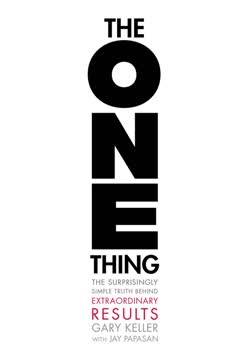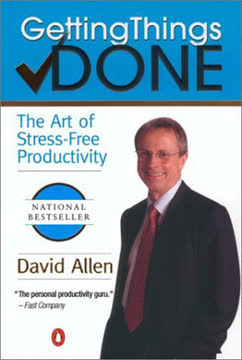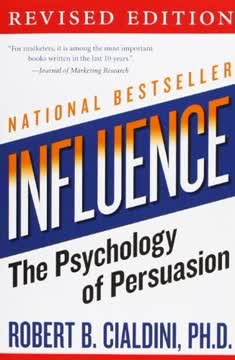Key Takeaways
1. The unconscious mind drives most of our behavior
As much as 95 percent of consumers' thinking occurs in their unconscious minds.
The hidden mind rules. Our conscious mind, which we often believe is in control, is actually more like a passenger observing the journey. The unconscious mind, operating beneath our awareness, is the true driver of our actions and decisions. This hidden force processes an astounding 11 million bits of information per second, while our conscious mind handles a mere 40 bits.
Implications for marketers:
- Traditional market research, which relies on conscious self-reporting, often misses the mark
- Neuromarketing techniques that tap into unconscious responses can reveal deeper consumer insights
- Effective advertising must appeal to both conscious and unconscious levels of the mind
The iceberg analogy: Like an iceberg, only a small portion of our mental processes are visible above the surface. The vast majority lies hidden beneath, silently shaping our perceptions, judgments, and behaviors.
2. We are humans first, consumers second
If you are interested in manipulating minds, please don't bother reading this book.
Beyond the "consumer" label. Marketers often make the mistake of viewing their audience solely as consumers, forgetting the complex human beings behind the purchasing decisions. This narrow focus ignores the deeper motivations, instincts, and universal needs that truly drive behavior.
Shifting the perspective:
- Focus on human insights rather than fleeting consumer trends
- Understand the enduring truths of human nature that transcend cultures and time periods
- Recognize that people's goals are to satisfy their own needs, not to consume your product
By adopting this human-centric approach, marketers can create more meaningful connections and develop products and messages that resonate on a deeper level. This perspective also encourages more ethical marketing practices that aim to genuinely improve people's lives rather than manipulate them into making purchases.
3. Our brains are wired for Stone Age survival, not modern consumerism
Our modern skulls house stone age minds.
Evolutionary mismatch. Despite our advanced technology and seemingly modern lives, our brains are still fundamentally shaped by the evolutionary pressures of our ancestral past. For over 99% of human history, we lived as hunter-gatherers, and our cognitive architecture reflects this heritage.
Stone Age instincts in a modern world:
- Craving high-calorie foods (once rare, now abundant)
- Seeking social status and acceptance
- Fear of rejection and outsider threats
- Attraction to novel experiences and information
Marketing implications:
- Successful brands often tap into these primal instincts
- Understanding evolutionary psychology can provide insights into consumer behavior
- Products and messaging can be designed to satisfy deep-seated needs rooted in our evolutionary past
This mismatch between our ancient brains and modern environment explains many seemingly irrational consumer behaviors and presents both challenges and opportunities for marketers.
4. Emotions, not logic, are the primary drivers of decision-making
We are not thinking machines. We are feeling machines that think.
The primacy of emotion. Contrary to popular belief, our decisions are not primarily the result of careful rational deliberation. Instead, emotions play a crucial role in guiding our choices, often without our conscious awareness.
The neuroscience of decision-making:
- The emotional brain (limbic system) processes information faster than the rational brain (neocortex)
- Damage to emotional centers of the brain severely impairs decision-making ability
- Emotions help us assign value to different options and motivate action
Implications for marketers:
- Focus on creating emotional connections with consumers
- Use storytelling and sensory experiences to evoke desired emotions
- Recognize that rational arguments alone are often insufficient to change behavior
While logical arguments and product features have their place, tapping into the emotional drivers of decision-making is often the key to successful marketing and brand building.
5. Brands succeed by tapping into deep-seated human needs and instincts
Brands are the new religion.
Beyond features and benefits. The most powerful brands don't just sell products; they tap into fundamental human desires and create a sense of meaning and belonging.
Universal human needs that brands can address:
- Social connection and acceptance
- Status and self-esteem
- Security and comfort
- Personal growth and self-actualization
- Excitement and novelty
Examples of brands leveraging human instincts:
- Apple: creativity, individuality, and status
- Nike: achievement, self-improvement, and tribal belonging
- Coca-Cola: happiness, social connection, and nostalgia
By aligning with these deep-seated needs, brands can create loyal followers and transcend mere product categories. This approach explains why some brands inspire almost religious devotion among their customers.
6. Effective marketing appeals to both emotional and rational minds
Marketers are in the business of selling states of emotion, not products or services.
Balancing heart and head. While emotions are primary drivers, the rational mind still plays a crucial role in decision-making. Effective marketing must engage both systems to create lasting impact and drive behavior change.
The dual-process model of persuasion:
- Emotional appeal: Create desire and positive associations
- Rational justification: Provide logical reasons to support the emotional decision
Strategies for engaging both minds:
- Lead with emotional storytelling, followed by factual support
- Use vivid imagery and metaphors to make rational arguments more compelling
- Provide both aspirational and practical benefits of the product/service
By addressing both the emotional and rational aspects of decision-making, marketers can create more persuasive and memorable campaigns that resonate with consumers on multiple levels.
7. Creating powerful experiences is key to building strong brand associations
Brands are like magnificent peacock tails.
Experience over information. In today's cluttered media landscape, simply broadcasting information about a brand is often insufficient. Creating immersive, multi-sensory experiences can forge much stronger and more lasting brand associations.
Elements of powerful brand experiences:
- Engage multiple senses (sight, sound, touch, taste, smell)
- Evoke strong emotions (joy, excitement, awe, etc.)
- Encourage active participation and social interaction
- Create memorable "peak" moments and positive endings
Examples of experience-driven branding:
- Red Bull: Sponsoring extreme sports events
- Starbucks: Creating a "third place" between home and work
- Disney: Immersive theme park experiences
These experiences go beyond traditional advertising to create deep emotional connections and lasting memories associated with the brand. They leverage the brain's tendency to form stronger neural connections through multi-sensory, emotionally charged events.
8. Taking action is crucial for changing behavior and solidifying brand loyalty
Tell me and I'll forget; show me and I may remember; involve me and I'll understand.
Action drives change. While awareness and positive associations are important, true behavior change and brand loyalty are solidified through repeated actions and experiences with a product or service.
The psychology of action:
- Physical actions engage more of the brain than passive observation
- Repetition strengthens neural pathways, making behaviors automatic
- Taking action can lead to cognitive dissonance, prompting attitude change to align with behavior
Strategies for encouraging action:
- Offer free trials and samples to lower barriers to initial use
- Create interactive experiences that allow hands-on engagement with the brand
- Develop loyalty programs that reward repeated actions and purchases
- Use social proof and peer influence to normalize desired behaviors
By focusing on getting consumers to take action, rather than just absorbing information, marketers can create more lasting changes in behavior and stronger brand relationships. This action-oriented approach recognizes that humans are "doers" more than passive recipients of information.
Last updated:
FAQ
What's Unconscious Branding about?
- Unconscious decision-making: The book explores how most consumer decisions are made unconsciously, challenging the assumption that consumers are fully aware of their choices.
- Neuroscience integration: Douglas Van Praet combines insights from neuroscience with marketing strategies to enhance marketing effectiveness.
- Human behavior focus: It emphasizes viewing consumers as humans with emotions and instincts, rather than just statistics.
Why should I read Unconscious Branding?
- Revolutionary insights: Offers a fresh perspective on consumer behavior, highlighting the unconscious mind's role in decision-making.
- Practical strategies: Provides actionable strategies for marketers to connect with consumers on a deeper emotional level.
- Science and practice bridge: Integrates neuroscience with marketing, equipping readers to influence consumer behavior effectively.
What are the key takeaways of Unconscious Branding?
- Two minds concept: Introduces the idea that humans operate from two cognitive systems—the conscious and the unconscious.
- Seven steps to change: Outlines a seven-step process for changing consumer behavior, including interrupting patterns and creating comfort.
- Emotional connection: Stresses that successful marketing must engage consumers emotionally, as feelings drive decisions more than rational thought.
What are the best quotes from Unconscious Branding and what do they mean?
- Einstein's insight: “The rational mind is the humble servant, the intuitive mind the faithful gift.” Emphasizes the importance of intuition and emotion in decision-making.
- Jung's perspective: “Until you make the unconscious conscious, it will direct your life and you will call it fate.” Highlights the significance of understanding unconscious motivations.
- Damasio's message: “We are feeling machines that think.” Captures the book's core message that emotions play a fundamental role in decision-making.
How does Unconscious Branding define the unconscious mind's role in consumer behavior?
- Influence on decisions: The unconscious mind significantly influences consumer decisions, often without awareness.
- Emotional triggers: Emotional triggers processed unconsciously shape consumer preferences.
- Neural pathways: Repeated exposure to stimuli creates strong neural pathways, influencing brand perception.
What is the seven-step process for behavior change in Unconscious Branding?
- Interrupt the Pattern: Capture attention by doing something unexpected to break habitual thought processes.
- Create Comfort: Establish safety and familiarity to make consumers receptive to new ideas.
- Lead the Imagination: Encourage consumers to envision product benefits, stimulating desire for change.
How can marketers apply the concepts from Unconscious Branding?
- Emotional connections: Prioritize creating emotional bonds with consumers to drive loyalty and purchasing decisions.
- Pattern interrupts: Implement strategies that disrupt habitual thought patterns to capture attention.
- Neuroscience insights: Use neuroscience findings to ensure campaigns resonate on both conscious and unconscious levels.
What role does neuroscience play in Unconscious Branding?
- Understanding the brain: Explains how the brain processes information and makes decisions, emphasizing the unconscious mind.
- Behavioral insights: Provides insights from cognitive science and neurobiology to create effective strategies.
- Emotional engagement: Supports the idea that emotional engagement is crucial for influencing consumer behavior.
How does Unconscious Branding suggest marketers create comfort for consumers?
- Establish familiarity: Create a sense of familiarity and safety in messaging to ease consumer anxiety.
- Build trust: Foster trust through transparency and authenticity, making consumers comfortable with purchasing decisions.
- Reduce anxiety: Address potential concerns and provide reassurance to make consumers more receptive.
How can brands effectively change consumer associations according to Unconscious Branding?
- Reframing narratives: Change consumer associations by reframing brand narratives to align with desired perceptions.
- Celebrity endorsements: Use celebrity endorsements to influence perceptions and enhance brand image.
- Positive experiences: Create positive experiences that reinforce desired associations, reshaping consumer perceptions.
What are some practical applications of the concepts in Unconscious Branding?
- Marketing strategies: Apply the seven steps to develop comprehensive strategies that engage consumers on multiple levels.
- Customer experiences: Focus on creating memorable experiences that resonate emotionally, increasing loyalty.
- Neuroscience insights: Craft messages that resonate deeply by using emotional triggers and appealing to both rational and emotional aspects.
What is the significance of pattern interruption in marketing according to Unconscious Branding?
- Captures attention: Crucial for breaking through everyday marketing noise and grabbing attention.
- Stimulates curiosity: Piques curiosity by presenting something unexpected, encouraging engagement.
- Facilitates behavior change: Leads to new behaviors, making consumers more open to trying new products.
Review Summary
Unconscious Branding receives mixed reviews, with an average rating of 3.92 out of 5. Many readers find it insightful, offering valuable information on neuroscience, consumer behavior, and marketing strategies. The book is praised for its thought-provoking content and real-world examples. Some readers appreciate its applicability to both business and personal life. However, critics argue that the information may be outdated or manipulative, and some find the technical language challenging. Overall, it's recommended for those interested in marketing, psychology, and consumer behavior.
Similar Books










Download PDF
Download EPUB
.epub digital book format is ideal for reading ebooks on phones, tablets, and e-readers.




